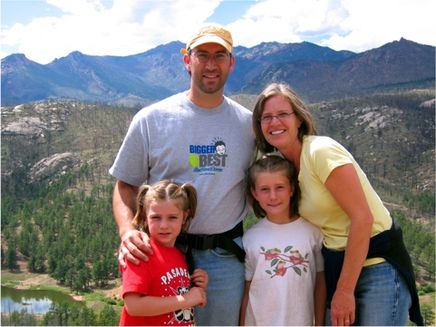Gardening Tips for the Week - Planting the Garden
Picture: Large leaf basil inter-planted with tomatoes from last year's garden.
I checked out the weather forecast in the Spokane area and it
looks like we're going to have temps at night above 40 degrees through
May 19th. If that holds true it's pretty much a green light to start
planting at least part of the garden. Here are some things to think
about when it comes to planting the garden.
Harden off tender plants:
"Hardening off" is a term used to describe acclimatizing plants to colder temps outside. This is especially true of plants that you've been growing inside the house where the plants don't experience much of a swing in temps from high to low or the stress of wind, rain and direct sun. To harden off plants, put them outside for a period of time each day. Avoid putting them in really hot direct sun or hard pelting rain. Gradually increase the amount of time they are outside. You can also put them outside in a cold frame.
Provide Proper Spacing:
Pay attention to the seed spacing advice on the seed packet. This is my Achilles' heel of gardening. I almost always crowd the plants. Sometimes this works in my favor. For example, peppers like to be crowded. They like to be tucked together to keep the humidity up and provide some protection from intense heat. Carrots on the other hand will simply not grow much if you don't give them adequate room. This goes for all root crops. Take note that the seed pack will indicate the recommended spacing when planting and then the recommended spacing after they start growing. If you use all the seeds, keep the seed pack around to double check the thinning requirements. One caveat to all of this is that the seed packs make their recommendations based on traditional row crops.
There are alternative methods of spacing that will maximize plants if you're working with a small space. Instead of planting your corn in a row, plant it in a small circle. Instead of planting your carrots in a row, scatter them in a bunch and thin out as required. If you have limited space, consider going vertical. Instead of planting bush beans, plant pole beans. You also might want to consider getting a bush variety of plant instead of a creeping plant that hogs space. Cucumbers and pumpkins/squash, that are notorious for taking over the garden, all come in space saving "bush" varieties. Check out the book "Square Foot Gardening" for more tips.
Take note when selecting your tomato varieties. Tomatoes come in determinate, compact with fruit ripening at the same time, and indeterminate where it keeps growing and setting fruit until the frost kills it. If you're cramped for space either get a determinate variety or set up your support structure for the tomatoes to train it to grow vertically. Go here for a nice breakdown of tomato varieties.
Preparing the Soil/Planting Hole:
One trick you may want to consider is digging deeper than you'll plant and sprinkle a little fertilizer at the bottom of the hole, and then cover that with about an inch of soil, and then plant your plants to the proper depth. Just make sure the bare roots of the plant or start or seeds are not touching the fertilizer.
Preparing the Plants:
Make sure the plants are well watered, and choose a time when they won't get immediately shocked by intense sun or wind. Most plants you'll want to scruff up the roots, but squash plants are the exception. They don't like to have their roots disturbed before you put them in the ground.
Sticking them in the Ground:
This is fairly straight forward for most plants. Put them in the ground with the soil equal to where the plant emerges from the soil in the container. But there are exceptions, with tomatoes being the most important. (Note: If you have two tomato plants coming up in one container, they divide easily without harming the plant. Just make sure each plant has sufficient roots. Also note that tomatoes and peppers should go in the ground closer to the end of May.)
Look at the stem of the tomato and you'll see a mass of tiny hairs. When these are placed under the soil they turn into roots, which is why you always plant tomatoes deeper than they are currently set in their container. This is also why you shouldn't grab tomato starts by the stem when transplanting. You'll damage the future roots. Grab them by the top as you nestle them out of their container.
I recommend digging a small trench and laying the tomato plant horizontally in to the trench. Cover the root ball and all of the plant except for the top portion. Make sure you've got at least three sets of leaves out of the ground. You'll want to snip off any leaves on the portion of the plant that is below the soil. Gently curve the top portion so that it is vertical, using the pressure of the soil, and firm it up. If you dig an 8 inch hole and put the plant in vertically, the roots will be in that cool deep soil and not grow as quickly. By keeping the majority of the plant an inch or two under the soil it will be warmer and grow more quickly.
For onion starts I like to dig a small trench and lay the onion starts with the is roots at the bottom of the trench, then come back and fill in the trench.
